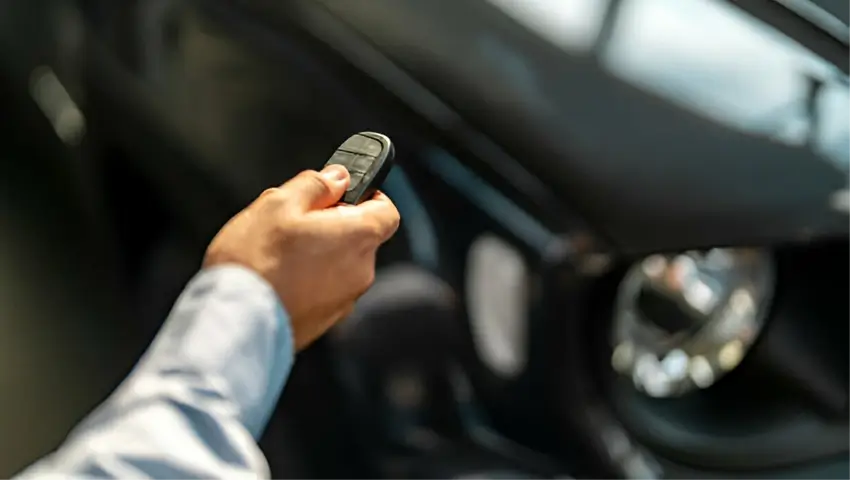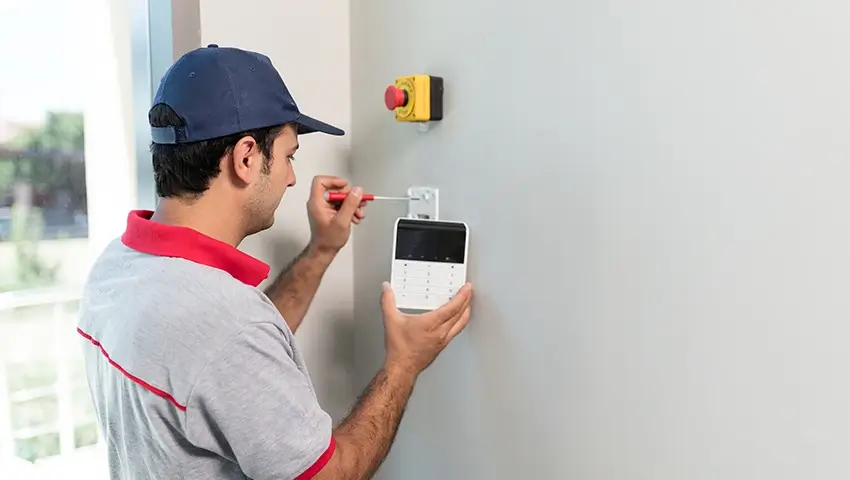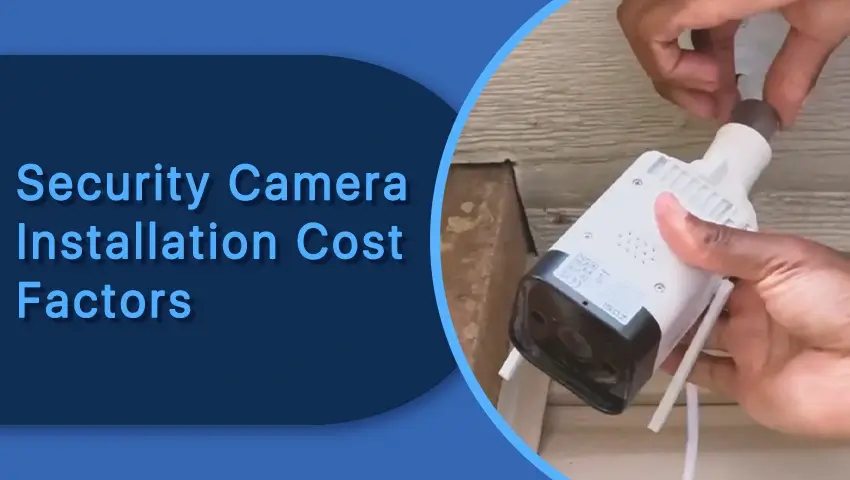Car theft – it’s a global worry that keeps vehicle owners up at night. Knowing your prized possession is secure is not only essential, it’s peace of mind. This is why an efficient car alarm system is an effective solution to preventing vehicle from being stolen.
In the lines to follow, we peel back the layers of car alarms – the nuts and bolts, features, and the know-how to install a system that cinches your vehicle’s safety. Whether you’re an automobile aficionado or someone yearning for security, this is your go-to guide for safeguarding your set of wheels.
Contents
Curious about what constitutes a Car Alarm System?
A car alarm system, also known as the modern-day knight in shining technology, defends your vehicle from theft or unwanted intrusion. Its role as a scarecrow for car thieves coupled with immediate notifications makes it an unsung hero in bolstering vehicle security.
Diving into the components of a Car Alarm System:
Primarily, a variety of elements contribute to the working of a car alarm system. Let’s shed some light on them.
- Control Module: Acting as a nerve-centre, it manages and steers the system’s diverse functions based on cues from sensors.
- Sensors: these play the indefatigable watchman by detecting and tracking specific events, including any mischief with doors, windows, motions, shocks or glass breakage.
- Siren/Horn: the sound ninja of the car alarm system, belts out a loud alarm to attract attention and deter any miscreants.
- Remote Key Fob: It indulges you with the power to interact with the alarm system, arming, and disarming the alarm, even when you’re at a distance.
- The Valet Switch paves the way for authorized personnel like valets or mechanics to temporarily deactivate the alarm system without setting off false alarms.
- Wiring and Connectors: Think of these as the veins and arteries of your car alarm system, linking all the elements and facilitating signals and power flow.
Looking at some nifty features of Car Alarm Systems:
- Remote Control is practically a standard feature now, enabling you to take control of the system from afar.
- Smartphone Integration: many alarm systems can now be manipulated via mobile apps. You can arm/disarm the alarm, view vehicle status, and get alerts.
- GPS Tracking: a novel feature that lets you have eyes on your vehicle’s location in real-time.
- Customizable Settings allow you to tweak sensitivity levels, pick triggers, or morph the alarm system to your liking – ensuring a comfortable and secure vehicle ownership experience.
Tools Crucial for Car Alarm Installation
Embarking on your car alarm installation requires an arsenal of select tools, such as:
- Panel Removal Tools: Visualize the finesse of a surgeon’s scalpel. That’s what a Panel Removal Tool brings to the table with its robust plastic or metal handle and a thin, flat, wedge-like tip. Custom-made to nestle into the crannies between panels and trims, it helps you separate them or free the retaining clips without the worry of unsightly scratches or mars.
- Wire Cutter/Stripper: Meet the barber for your wires. Crafted to snip wires or cables, wire cutters or strippers flaunt a dual-blade design that converges to slice neatly through the wire under pressure. It promises neat cuts, mitigating the peril of damaging the wire or tool.
- Soldering Iron/Crimping Tool: Channeling its inner alchemist, this tool melts apart or fuses wires, electronic components, or metal parts to form an enduring electrical liaison. The secret to wielding this effectively? The perfect temperature.
- Heat-Shrink Tubing/Electric Tape: Don’t let its typicality fool you, this flexible plastic tubing, also known as heat shrink, springs into action, shrinking its diameter when heated. It matches electric tape’s forte of sheltering wires.
- Multimeter/Voltmeter: Donning the detective’s hat, these tools measure different electrical quantities within a circuit. They’re the perfect assistants to verify your vehicle wires’ functionalities that you plan to splice into and determine your vehicle’s switches.
Journeying Through Car Alarm Installation: A Comprehensive Guide
Congrats! You’ve rallied your tools and studied the schematics of a car alarm system. Let’s dive into the installation.
- Read the Instructions: Congratulations on choosing your manufacturer. Now, their installation guide is your new best friend. Arm yourself with knowledge about each component, wiring diagrams, and specific needs of your particular system.
- Disconnect the Battery: Remember, your vehicle is an electric playground. So, for your safety, disconnect the negative terminal of your vehicle’s battery before the electrical work begins.
- Identify Installation Locations: Time to channel your inner architect. Determine the prime spots for your alarm system’s components: the control module, siren, and various sensors. Ensure they are securely fixed, without meddling with other vehicle components. Use a mounting template or a marking pen to earmark your locations.
- Prepare the Wiring: The manufacturer’s diagram is your guide to the constellation of connections needed. Prepare the wires by stripping the insulation from the ends. Use the right connectors or soldering techniques to thoroughly bond the connection.
- Connect the Power Wires: Once all the alarm system components are wired up, it’s time for power. The alarm system draws power typically from the vehicle’s battery or a dedicated power source. Connect the power wires, respecting the proper polarity, and following the fuse and circuit protection instructions.
- Connect the Ground Wire: The Ground Wire, an electrical safety net, is a conductive wire serving as a safe conduit for the electrical currents to flow into the ground. It not only protects from excess voltage but also safeguards against electrical shock or damage. With its unique green or green/yellow color insulation, it’s easy to spot and requires careful connection.
- Connect Sensor Wires: Playing to the abilities of your specific alarm system, you may have to wire an array of sensors encompassing door, motion, and shock sensors, among others. Stick to the wiring diagram and instructions for the right connections, ensuring that all wiring connects to the power source eventually.
- Connect the Siren: Find a secure location for your siren and wire it to the alarm system’s control module. Be mindful of the siren’s sound output – it should be conspicuous without being irksome. You can put the siren to the test using your key fob or smartphone app, but only after all connections are in place.
- Test the Connection: Now that the installation is complete, it’s time for a test drive. Smoothly rectify any component discrepancies, reconnect the battery, and activate your alarm system to confirm operations.
The Control Module of Car Alarm Systems
The Control Module, the beating heart of your car alarm system, is the embodiment of cruciality, sweeping in to dictate functionality and effectiveness. Picture it as the central command station, ably marshaling various features and functions of your very own alarm system.
Features of The Control Module
Let’s delve into the treasure trove of attributes that flaunt themselves in the Control Module of car alarm systems:
- Remote Set-Up: Your control module assumes the mantle of a designer, curating your remote control or key fob used for the car alarm system. It customizes the remote control’s buttons for precise functions, be it arming, disarming, panic mode, or auxiliary features.
- On/Off Command: The control module ushers in a stage for you to perform the role of activation and deactivation of the car alarm system. It allows you to run the show, arming or disarming the system using your remote key fob, a keyless entry pad, or an integrated button inside the vehicle.
- Sensory Alert: The Control Module stands like a sentinel, diligently processing signals from the myriad sensors such as door sensors and motion detectors housed in the alarm system. Upon any semblance of unauthorized entry or suspicious activity, it nudges the alarm system into action.
- Alarm Initiation: Perceiving any breach or intrusion caught by its loyal sensors, the control module sets the alarm ablaze, resulting in a siren or horn that amplifies into the silence. This ensures immediate redressal of potential threats and maximum protection for your vehicle.
- Vehicle Lockdown: Boasting of advanced immobilization features, control module dons the role of a watchdog preventing any uninvited individuals from riding away with your vehicle. By pulling the plug on the ignition or fuel system, it leaves no stone unturned in your vehicle’s protection.
- Communication and Alerts: The control module wears one more hat – of a communicator. It alerts and updates the vehicle owner through diverse mediums such as a remote key fob, smartphone app, or the vehicle’s inbuilt security system, thus keeping you abreast with your vehicle’s security status.
Mastering Control Module Placement: Key Tips
Crafting perfect nesting for your control module demands thoughtfulness. Here’s a showcase of some fitting spots:
- Beneath the Dashboard: This frequently-chosen spot near the steering column serves as a brilliant stage for the control module. Tucked away in subtlety, it still ensures convenience for wiring connections, preserving your vehicle’s interior aesthetics.
- Center Console’s Inner Sanctum: Embrace the control module within the center console for a neat and concealed setup. A testament to added security, it guarantees strong protection against any foul play or theft threats.
- A Place under the Hood: At times, the engine compartment turns out to be the chosen home for the control module. Opt for this location only if you can guarantee immunity against high heat, moisture, and potential damage courtesy of engine vibrations.
- Behind the Glove Box: With enough space being a prerequisite, the area behind the glove box morphs into a perfect dwelling for the module. Not only does it offer protection but it ensures the path to installation or servicing remains smooth.
- The Trunk: Welcome the trunk space of sedans, hatchbacks, and select SUVs into your list of potential control module bases. Designed to house luggage and other items while secured by a lid or hatch, this area ensures a safe haven for your module.
Upgrading Your Car Security: Noteworthy Measures
Maximizing the security of your car doesn’t just guard it against theft or unwarranted access; it makes you a responsible vehicle owner. Beyond equipping your vehicle with a car alarm system, let’s explore additional significant steps for enhancing your car’s protective shield:
- Seal the Doors: Consistent with the philosophy of ‘better safe than sorry’, always ensure your car doors are locked, irrespective of the duration of your absence. This mundane act is a powerful thief deterrent.
- Employ a Steering Wheel Lock: Also known aptly as steering wheel clubs, these physical barriers link to your vehicle’s steering wheel, proving a tough challenge for anyone daring to drive away your car. They serve as a visual warning to thieves and are reasonably priced too.
- Adopt a Tracking System: Initialization of a GPS tracking system is an astute way to leverage technology for your vehicle’s safeguard. God forbid, if the vehicle is robbed, the location can be traced swiftly, making recovery a real possibility.
- Seek Well-Lit Spaces for Parking: Wise parking involves picking well-illuminated, crowded spots. This selection naturally detracts thieves who prefer darker, isolated locations for their mischief. It also aligns the odds of their deeds being spotted when in populous surroundings.
- Use a Car Cover: A car cover is like an invisibility cloak for your vehicle, secretly shrouding its contents. This concealment further dissuades thieves from targeting your car.
- Conceal or Carry Valuables: As a thumb rule, keep your valuables hidden or carry them when you exit your vehicle. If storing inside the vehicle is necessary, a locked compartment or the trunk makes for the ideal storage spot.
- Install a Window Security Film: Achieve a stronger defense against break-ins by applying window security film to your car’s windows. It fortifies the windows against potential smash-and-grab thefts.
- Combat phishing and remote hacking: Stay unwaveringly on guard for phishing or remote hacking attempts that potentially threaten your car’s security systems. It’s sage advice never to share any personal information or click on dubious links concerning your vehicle.
Car Alarm System FAQs
1. Can I embed an alarm system in my car?
Indeed you can! A car alarm system compatible with your vehicle is not just advisable but essential. While most vehicles come equipped with built-in manufacturer car alarm systems, for those that do not, procuring a fitting one is always an option. You can opt for a DIY installation or rely on the expertise of a professional.
2. What’s the expense incurred for car alarm installation?
The typical cost of a car alarm oscillates between $150 and $250. The choice of a self-installation could bring down costs. However, professional installation costs differ across service providers. Various specialty shops offer car alarm installation and modification services, enabling you to compare and get the best value for your investment.
3. How much time does it require to install a car alarm system?
On average, a standard car alarm installation ranges from 1 to 4 hours. The actual time could deviate depending on factors such as alarm system intricacies, vehicle type, installer proficiency, and any distinctive features or customizations you opt for.
4. Do car alarm systems genuinely deter thieves?
Absolutely yes! Car alarm systems significantly enhance your line of defense against thieves and lower vehicle theft risks. The noisy alarm warranted by any tampering attempts gathers immediate attention, and alerts to the owner further fortify security. Augment the efficiency of your car alarm system by choosing a trustworthy brand, ensuring a proper installation, and synergizing it with other car security measures.
Final Thoughts
Adopting a car alarm system is a smart move towards bolstering the safety of your vehicle. An aptly installed system transforms into a powerful barrier against potential theft. Prior to installation, equip yourself with the necessary tools and discern the ideal locale in your vehicle for the control module. Be mindful that the timeframe for a complete installation could fluctuate based on the complexity of the system, the type of vehicle, and the unique customizations involved.
Never hesitate to seek professional assistance if you struggle with the installation. A professional’s touch guarantees a flawless process and optimizes the efficacy of your car alarm system, making your vehicle a fortress on wheels.





